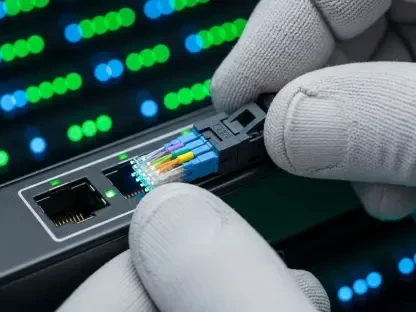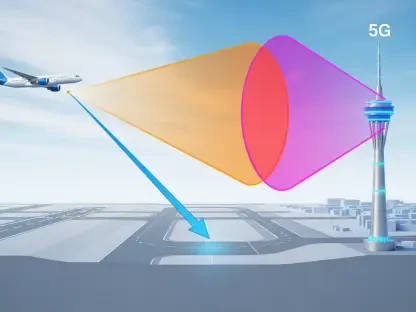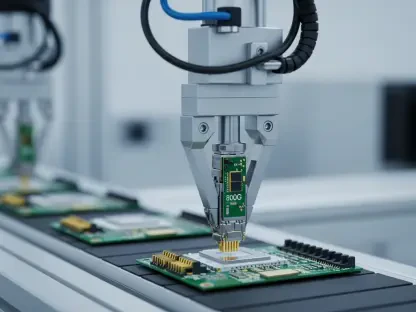The current era of technological advancement has seen an unprecedented rise in wireless remote temperature sensors as critical components of smart infrastructure. Between 2025 and 2032, this market is projected to expand significantly, from USD 1.68 billion to USD 2.02 billion, underscoring a steady compound annual growth rate (CAGR) of 2.37%. This growth is being driven by the increasing demand for precise, real-time temperature monitoring across diverse environments where wired solutions prove impractical. The integration of these sensors into smart buildings, healthcare, logistics, and industrial automation showcases their indispensable role in modern infrastructure development.
Driving Factors Behind Market Expansion
Demand for Remote Monitoring
Remote temperature monitoring has become a vital necessity across various sectors, including healthcare, industrial applications, and logistics. As technology advances, organizations are increasingly adopting wireless sensors for their ability to provide real-time data and seamless connectivity. In healthcare, such sensors ensure patient safety and maintain drug efficacy by monitoring temperatures in hospitals and pharmaceutical storage facilities consistently. Industrial applications, especially those requiring process control or operating in hazardous environments, also significantly benefit from wireless sensors. These sensors are especially critical in conditions and locations where wired systems are not viable, providing flexibility and cost-effectiveness.
Compliance with regulations further drives the widespread adoption of these sensors. In the logistics sector, particularly in cold chain management, there is a pressing need for precise temperature control to maintain product integrity. Similarly, stringent guidelines around food safety and pharmaceutical storage necessitate continuous monitoring, enhancing the demand for wireless solutions. This regulatory landscape not only propels market growth but also ensures that the technology evolves to meet increasingly sophisticated compliance requirements. Thus, the shift towards wireless temperature sensors is transforming how industries approach remote monitoring.
Technological Advancements
Advancements in sensor technology and wireless communications have catalyzed the evolution of wireless temperature sensors, broadening their functionality and appeal. Innovations such as low-power sensor designs, long-range wireless networks like LoRa and Zigbee, and improved signal processing capabilities are providing precise and low-latency temperature tracking. These advancements not only enhance operational efficiencies but also expand the potential applications of wireless temperature sensors. By integrating cutting-edge technology, these sensors can better support critical operations and maintain reliability across various infrastructure setups.
Simultaneously, sensor miniaturization and enhanced wireless protocols allow for increased integration with IoT platforms. This shift towards IoT-enabled environments underscores the importance of wireless temperature sensors as foundational elements in intelligent infrastructure. As smart systems become more prevalent, the ability to seamlessly integrate these sensors with centralized monitoring systems becomes crucial. This evolution highlights their evolving role in the architecture of emerging smart cities and intelligent infrastructure projects, supporting their dynamic requirements for data accuracy and rapid response.
Trends Influencing Adoption
IoT and Smart Systems
The rise of the Internet of Things (IoT) has been transformative for the wireless temperature sensor market, driving the demand for sensor networks that interface with centralized monitoring systems. As smart homes, factories, and buildings proliferate, the need for integrated sensor networks for real-time environmental monitoring is becoming increasingly critical. Wireless temperature sensors are instrumental in enabling these ecosystems, providing essential data for smarter decision-making and resource management. This trend is crucial in supporting energy management strategies and enhancing overall operational efficiency in modern infrastructure.
As IoT technology continues to mature, the seamless integration of wireless sensors into smart architecture is expected to increase. The growth of smart cities, with ambitions of sustainability and improved quality of urban life, relies heavily on sophisticated sensor networks. These networks allow for comprehensive data collection and analyses, essential for smart city applications like traffic management, energy conservation, and public safety. Wireless temperature sensors play a vital role in enabling these applications by providing the necessary temperature data, which drives real-time decision-making and adaptive responses.
Geographic Market Leadership
Geographical trends in the wireless temperature sensor market reveal North America as a leading region, driven by early IoT adoption and stringent compliance requirements across various industries. The region’s appetite for innovation in both healthcare and smart building sectors is fueling demand, while Europe’s focus on smart city initiatives and industrial automation complements this growth pattern. Europe’s commitment to regulatory compliance, particularly in food and pharmaceutical logistics, further reinforces the necessity of high-quality monitoring solutions. These factors underscore their contribution to the widespread adoption of wireless temperature sensors.
Meanwhile, the Asia-Pacific region is anticipated to experience the fastest growth due to its expanding healthcare sector and rapid industrial development in countries like China and India. Cold chain investments and infrastructure modernization are among the critical factors propelling this growth, as organizations seek solutions that align with global standards. South America and parts of the Middle East and Africa are also adapting to these technologies, particularly in logistics and energy sectors, as they recognize the benefits of enhanced monitoring for efficiency and compliance. This regional expansion highlights a global shift towards smarter infrastructure supported by wireless temperature sensors.
Market Segmentation and Opportunities
Diverse Applications
In analyzing market segmentation, it is clear that wireless temperature sensors cater to a broad spectrum of applications and environments. Segments are typically defined by sensor type, application, connectivity, durability, environmental conditions, and end-user industries. These distinctions reflect the diverse necessities and conditions that sensors must accommodate, enabling precise temperature monitoring in scenarios ranging from industrial automation to healthcare facilities. This segmentation underscores the sensors’ adaptability and their pivotal role in delivering tailored solutions to meet varied demands across industries.
Notable market opportunities have been identified in sectors such as agriculture, smart cities, and logistics, focusing on cost-effective operations through remote monitoring and control. In industrial settings, predictive maintenance, and real-time analytics rely on accurate temperature data provided by these sensors, marking them as indispensable tools for optimized performance and safety. The health sector further demonstrates this reliance, requiring continuous temperature surveillance for both patient care and ensuring pharmaceutical quality. These factors collectively make wireless temperature sensors a critical component in sustaining and advancing industry standards.
Key Market Players
Prominent industry participants such as Honeywell International Inc, Texas Instruments Incorporated, Yokogawa Electric Corporation, and TE Connectivity Ltd are at the forefront of driving innovation. These key players are instrumental in pushing the boundaries of technology through miniaturization and the development of sophisticated wireless protocols. They steadily enhance their integration with IoT platforms, responding to the changing technological landscape and shifting consumer demands. Their continuous investment in research and development allows for expanded capabilities and underpins their leadership in the market.
These companies contribute significantly to shaping the current and future trajectory of the wireless temperature sensor market. Their focus on innovation ensures the development of solutions that address emerging industry needs and compliance mandates effectively. As a result, they enable industries to harness the full potential of wireless sensors, ensuring precise, real-time temperature monitoring and control. By maintaining this momentum, these industry leaders stand to significantly influence the future of smart infrastructure globally.
Looking Ahead
The current technological era has witnessed a significant surge in wireless remote temperature sensors, which have become essential elements of smart infrastructure. From 2025 to 2032, the market for these sensors is anticipated to grow markedly, increasing from USD 1.68 billion to USD 2.02 billion. This represents a steady compound annual growth rate (CAGR) of 2.37%. The upsurge is fueled by the rising demand for accurate and real-time temperature monitoring in a range of settings where traditional wired systems fall short. These sensors are being integrated into smart buildings, healthcare, logistics, and industrial automation, highlighting their crucial role in contemporary infrastructure development. Wireless sensors offer the advantage of flexibility and easy installation, making them ideal for situations where wiring is difficult or impractical. As industries continue to emphasize efficiency and innovation, the pivotal role of these smart sensors in optimizing operational processes and ensuring safety becomes even more pronounced.









